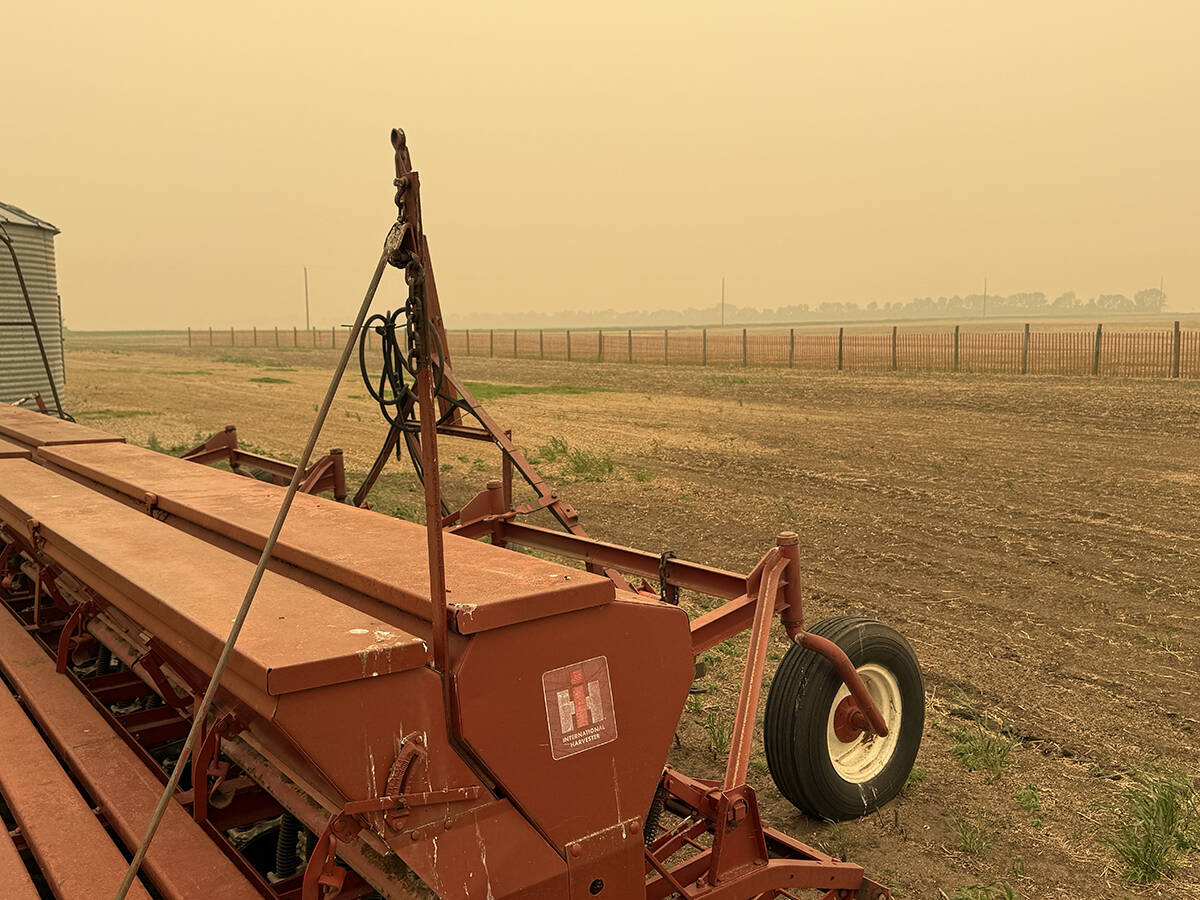GLENDON, Alta. – There’s little Canadians can do to open the American border to live cattle, but a good meal and a good visit can go a long way to helping people feel better.
That idea sparked a group of northeastern Albertans to organize a day-long seminar to help cattle producers better deal with BSE.
“The underlying reason is to make you feel good for a short time. In agriculture, as a whole, there isn’t a whole lot of good news out there,” said Gordon Graves, an Iron River farmer and organizer of the third Surviving the Hard Times conference.
Read Also

Wildfires have unexpected upside this year
One farmer feels smoke from nearby wildfires shrouded the July skies and protected his crop from the sun’s burning rays, resulting in more seeds per pod and more pods per plant.
The stress on families from the combination of drought, grasshoppers and BSE has farmers searching for ways to cope with mounting bills and little hope, said Graves.
“It’s stretching the limits beyond imagination or the pocket book. At the same time it’s put unbelievable wedges into marriages and between younger generations and older generations,” said Graves, who hopes a day of food, information and fun will help relieve stress and give some producers some coping tools.
Linnette Newby, the Family Community Support Services director in the County of St. Paul, said school liaison workers see stress in students created by BSE.
“Students have a lifestyle they’re comfortable with and certain expectations. When that’s lost that means a lot to them,” said Newby.
The stress manifests itself in marital breakdown and an increase in alcohol use in the adults.
Newby said she hoped the two free meals, a comedian, a mental health specialist and discussions from political and agricultural leaders will help families under stress.
“This is an opportunity to network and realize you’re not alone,” she said. “It’s a safe avenue to get information.”
Fredda Ross of Glendon came mainly to visit with her neighbours and hear how others are getting along.
“It’s a good way to cope,” said Ross, who added not cooking for two meals is like a mini holiday.
Bob Dodds of Cold Lake also came to socialize with his neighbours and to offer advice to Alberta Agriculture minister Shirley McClellan.
The more than $400 million of provincial BSE aid money paid to farmers was a Band-aid, he said.
He believes that money should be spent helping farmers get an official apprenticeship trade like welding or carpentry.
“We need to train our farmers so they’ve got something to fall back on,” said Dodds.
“The handouts are not helping us.”
Murray Werstiuk of Glendon said he needed to hear if there is a future in the cattle industry.
“I need to see if there’s a light at the end of the tunnel. Should I stay in cattle or move on,” said Werstiuk, who has about 100 cows.
“I feel ourselves going backwards.”
Kevin Wirsta of St. Paul said events like these are always beneficial to producers.
“Guys get to vent their problems and bring up new ideas. Speaking about it helps bring out the tension,” he said.
Land value, ILO link rejected
By Ian Bell
Brandon bureau
news
Intensive livestock operations do not have a negative effect on neighbouring property values in rural Manitoba, according to a study released last week by the Manitoba Pork Council.
“The study shows quite conclusively that there is generally a positive or at the very least a neutral impact upon property values,” said Peter Mah, the pork council’s director of community relations and sustainable development.
But the study and its findings were described by ILO critics as nothing more than costly propaganda.
“It’s just another waste of farmers’ money to try to come up with the results they wanted,” said Ken Sigurdson, regional co-ordinator with the National Farmers Union and an opponent of large, intensive hog barn developments.
The study, conducted by Royal LePage Stevenson Advisors on behalf of the Manitoba Pork Council, reviewed more than 470 property sales over a five-year period and looked at values of homes and farmland within a five-mile radius of intensive livestock developments.
The authors of the study found that farmland located close to a hog ILO generally increased in value, possibly because the farms had greater access to manure for fertilizing crops.
The study also concluded that house values within two or three kilometres of a livestock operation were, for the most part, not much different from the prices of houses located six to eight km from ILOs.
“After studying the results it can be concluded that, within the case study areas, there is no consistent statistical evidence to support the claims that hog ILOs suppress or have a negative impact on neighbouring property values,” said the authors.
“In fact the data generally suggests that relatively higher prices are commonly found within close proximity to hog ILOs in many municipalities.”
Mah said the report provides a comprehensive and statistically sound study to counter a criticism often leveled against hog producers.
Although the study was commissioned by the council, he described it as independent, since the real estate advisory firm worked at arm’s length when carrying out the research.
Sigurdson said numbers are easily twisted during such studies to arrive at desired conclusions.
The money spent on the study would have been better spent helping family farms survive or finding alternatives to producing hogs in ILOs, he said.
The study included areas with hog operations that ranged in size from 1,120 to 3,500 animal units.
A cattle feedlot and a poultry operation were also included.
The property sales reviewed by the study took place between 1998 and 2003.














